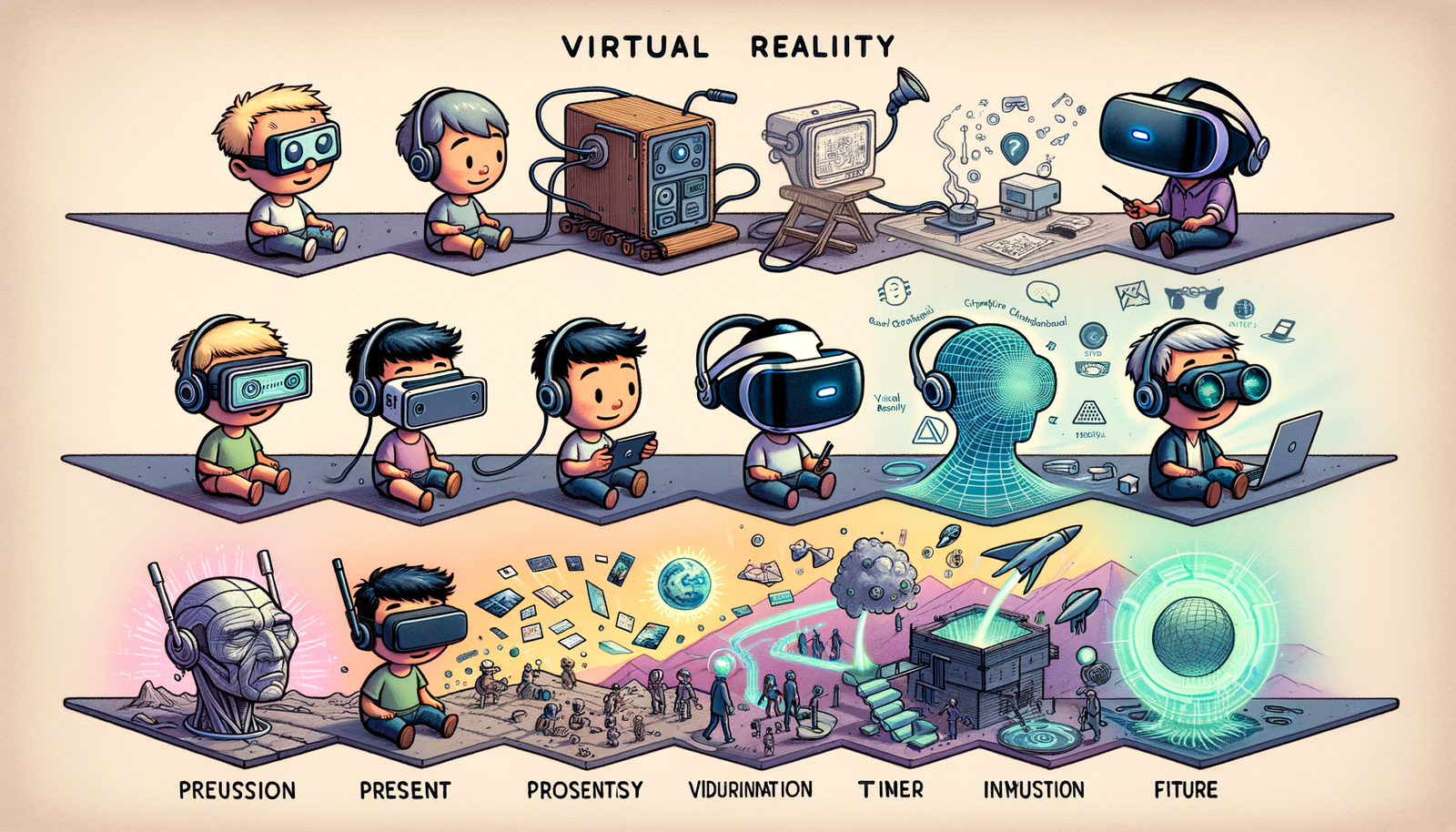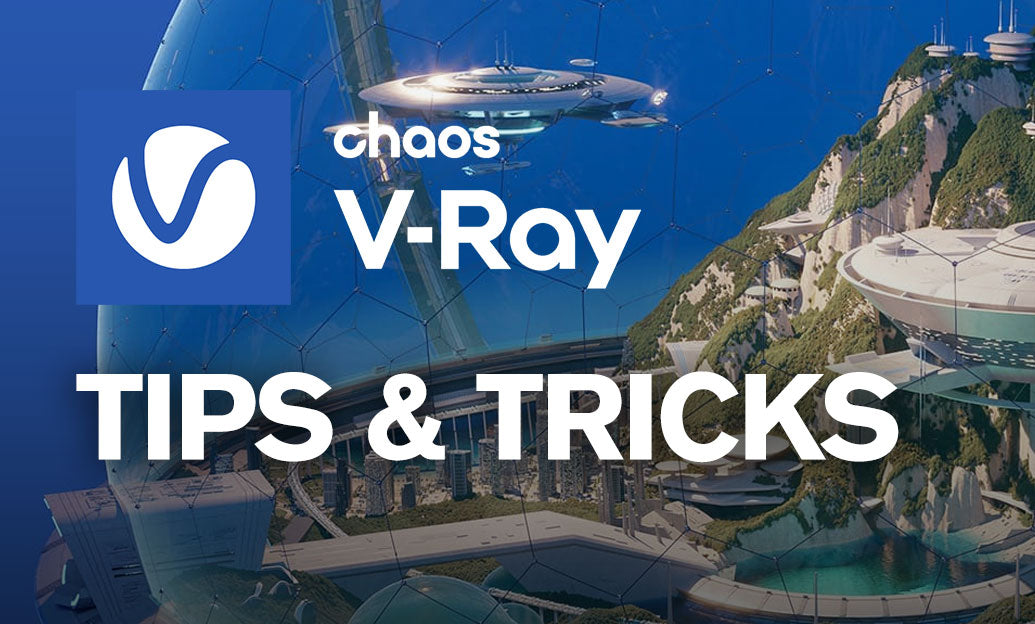Your Cart is Empty
Customer Testimonials
-
"Great customer service. The folks at Novedge were super helpful in navigating a somewhat complicated order including software upgrades and serial numbers in various stages of inactivity. They were friendly and helpful throughout the process.."
Ruben Ruckmark
"Quick & very helpful. We have been using Novedge for years and are very happy with their quick service when we need to make a purchase and excellent support resolving any issues."
Will Woodson
"Scott is the best. He reminds me about subscriptions dates, guides me in the correct direction for updates. He always responds promptly to me. He is literally the reason I continue to work with Novedge and will do so in the future."
Edward Mchugh
"Calvin Lok is “the man”. After my purchase of Sketchup 2021, he called me and provided step-by-step instructions to ease me through difficulties I was having with the setup of my new software."
Mike Borzage
Design Software History: The Evolution of Virtual Reality in Design Visualization: History, Impact, and Future Prospects
July 11, 2024 6 min read


Introduction to Virtual Reality in Design Visualization
Virtual Reality (VR) technology has profoundly impacted the field of design visualization. By immersing users in a fully interactive digital environment, VR allows for a level of engagement and realism that traditional methods simply cannot match. This blog post will explore the history, evolution, and transformative impact of VR in various design fields, as well as future prospects and challenges.
Overview of Virtual Reality (VR) Technology
Definition and Core Components of VR
Virtual Reality (VR) is a simulated experience that can be similar to or completely different from the real world. It utilizes various hardware and software technologies to create immersive environments that users can interact with. The core components of VR include:
- Head-Mounted Displays (HMDs): These devices, such as the Oculus Rift and HTC Vive, provide the visual and auditory stimuli needed to create a sense of presence in a virtual environment.
- Motion Tracking: Technologies like cameras and sensors track the user's head and body movements, allowing the virtual environment to respond in real-time.
- Input Devices: Controllers, gloves, and other devices enable users to interact with the virtual world, pick up objects, and perform tasks.
Historical Context: Early Developments in VR Technology
The concept of VR has been around for decades, with early experiments dating back to the 1960s. One of the first notable attempts was the Sensorama, created by Morton Heilig in 1962. This mechanical device provided a multi-sensory experience, combining 3D visuals, sound, vibrations, and even smells. In the 1980s, VR began to gain more traction with the advent of computers and improved graphics technology. Companies like VPL Research, founded by Jaron Lanier, pioneered early VR systems and coined the term "virtual reality."
Initial Integration with Design Software
First Instances of VR Used in Design Visualization
The initial integration of VR with design software can be traced back to the 1990s when industries started exploring its potential for visualization and simulation. Early adopters saw the potential for VR to revolutionize how designs were presented and reviewed. For instance, architectural firms began using VR to create virtual walkthroughs of their projects, allowing clients to experience a building before it was constructed.
Early Adopters and Pioneering Companies
Several companies were at the forefront of integrating VR into design processes. Firms like Autodesk, known for its AutoCAD software, began exploring VR as a means to enhance their design tools. Similarly, architects and product designers started using VR to visualize complex structures and prototypes, providing a deeper understanding of spatial relationships and design aesthetics.
Evolution of VR-Enabled Design Software
Major Milestones in VR and Design
Over the years, several key milestones have marked the evolution of VR-enabled design software. These include significant software developments and influential product releases that have shaped the industry.
- Autodesk Revit: Introduced in 2000, Revit became a critical tool for architects, enabling Building Information Modeling (BIM) and later incorporating VR capabilities.
- Unity and Unreal Engine: These game development engines revolutionized real-time rendering and interactivity, making them popular choices for VR design visualization.
- Oculus Rift: The release of the Oculus Rift in 2016 marked a significant leap in VR technology, offering high-quality visuals and immersive experiences that were quickly adopted by designers.
Technological Advancements
Improvements in Hardware: VR Headsets and Motion Controllers
The hardware used in VR has seen substantial improvements over the years. Early VR systems were bulky, expensive, and had limited capabilities. However, with advancements in technology, modern VR headsets are more comfortable, affordable, and powerful. Devices like the Oculus Rift, HTC Vive, and PlayStation VR have set new standards for visual fidelity, latency, and user experience. Additionally, motion controllers have evolved to provide more precise and intuitive interactions within virtual environments.
Software Innovations: Real-Time Rendering, Interactive Environments, Haptic Feedback
Software innovations have played a crucial role in the evolution of VR-enabled design. Real-time rendering engines, such as Unity and Unreal Engine, have made it possible to create highly detailed and interactive virtual environments. These engines allow designers to visualize their creations in real-time, making it easier to iterate and refine their designs. Furthermore, the integration of haptic feedback technologies has enhanced the sense of immersion by providing tactile sensations, allowing users to feel textures and materials in the virtual world.
Transformative Impact on Various Design Fields
Architectural Design
Enhanced Client Presentations and Virtual Walkthroughs
In architectural design, VR has transformed the way projects are presented to clients. Traditional 2D drawings and static 3D models are now complemented by immersive virtual walkthroughs. Clients can explore a building in its entirety, experiencing the scale, materials, and spatial relationships as if they were physically present. This has led to more informed decision-making and greater client satisfaction.
Improved Spatial Understanding and Problem-Solving
Architects and designers benefit from VR by gaining a better understanding of spatial dynamics and potential design issues. By immersing themselves in a virtual environment, they can identify problems that might not be evident in traditional drawings or models. This leads to more effective problem-solving and optimized design solutions.
Engineering and Product Design
Prototyping and Iterative Design Processes
In engineering and product design, VR has revolutionized prototyping and iterative design processes. Designers can create virtual prototypes and test them in various conditions without the need for physical models. This reduces costs and speeds up the development cycle. Iterative design becomes more efficient as changes can be made and reviewed in real-time within the virtual environment.
Collaboration and Review in a Virtual Space
VR has also enhanced collaboration among design teams. Engineers and designers can work together in a shared virtual space, regardless of their physical location. This fosters better communication and more effective reviews, as team members can interact with the design in real-time and provide instant feedback. It also allows stakeholders to be more involved in the design process, leading to better alignment with project goals.
Entertainment and Media
Game Design and Immersive Storytelling
In the entertainment and media industry, VR has opened up new possibilities for game design and immersive storytelling. Game developers leverage VR to create immersive experiences that engage players on a deeper level. The ability to explore virtual worlds and interact with characters in a lifelike manner has led to more compelling and memorable gaming experiences. Additionally, VR is being used in other forms of media, such as virtual concerts and interactive documentaries, pushing the boundaries of traditional storytelling.
VR in Film Production and Special Effects
Film production has also been impacted by VR technology. Directors and cinematographers can use VR to visualize scenes and plan camera movements before shooting begins. This enhances creativity and allows for more complex and dynamic shots. Additionally, VR is used in the creation of special effects, providing a more immersive way to design and review visual elements that will be integrated into live-action footage.
Future Prospects and Challenges
Emerging Trends
Integration with AI and Machine Learning for Predictive Design
The future of VR in design visualization is closely tied to advancements in artificial intelligence (AI) and machine learning. These technologies can be integrated with VR to create predictive design tools that anticipate user needs and optimize design outcomes. For example, AI algorithms can analyze user interactions within a VR environment and provide suggestions for improving ergonomics, aesthetics, or functionality. This will lead to more intelligent and efficient design processes.
Increased Accessibility and Lower Costs
As VR technology continues to evolve, it is expected to become more accessible and affordable. The cost of VR hardware and software has been steadily decreasing, making it more feasible for smaller firms and individual designers to adopt. Additionally, advancements in mobile VR and cloud-based solutions will further democratize access to VR tools, enabling a broader range of users to leverage its benefits.
Challenges and Considerations
Technical Limitations: Resolution, Latency, and User Experience
Despite its many advantages, VR technology still faces several technical challenges. One of the primary concerns is resolution. While modern VR headsets offer high-resolution displays, there is still room for improvement to achieve photorealistic visuals. Latency, or the delay between user actions and system responses, is another critical issue. High latency can cause motion sickness and disrupt the immersive experience. Ensuring a consistently smooth and responsive user experience remains a priority for VR developers.
Ethical and Practical Concerns: Data Privacy, User Health, and Long-Term Adoption
There are also ethical and practical considerations associated with the widespread adoption of VR. Data privacy is a significant concern, as VR systems often collect detailed information about user behaviors and interactions. Ensuring that this data is securely managed and used responsibly is crucial. Additionally, prolonged use of VR can have health implications, such as eye strain and motion sickness. Developers must consider these factors and design systems that prioritize user well-being. Finally, the long-term adoption of VR will depend on its ability to integrate seamlessly into existing workflows and overcome any barriers to entry.
Conclusion: The Ongoing Evolution
In conclusion, Virtual Reality has had a transformative impact on design visualization, offering unprecedented levels of immersion, interactivity, and realism. From early experiments and pioneering companies to the latest advancements in hardware and software, VR has continually pushed the boundaries of what is possible in design. As we look to the future, the integration of AI, increased accessibility, and ongoing innovations will further enhance the capabilities of VR. While challenges remain, the potential for growth and innovation is immense, and VR will undoubtedly continue to shape the landscape of design visualization for years to come.
Also in Design News

Cinema 4D Tip: Structured Content Browser Workflow for Cinema 4D Asset Management
January 07, 2026 2 min read
Read MoreSubscribe
Sign up to get the latest on sales, new releases and more …




